The Halton Hills Fire Department offers valuable information on fire prevention through their Public Safety Education program for residents. It covers a range of topics, including smoke alarms, emergency preparedness, and safety tips for various situations such as cooking, heating, and using fireplaces.
Page Index
The Halton Hills Fire Department provides important information on how to keep yourself and your family safe by providing fire safety education on a range of topics, including:

What's your plan?
Prepare yourself by thinking ahead, asking questions, and deciding whether to stay or go based on your abilities.
Ask yourself, "If there's a fire in the building, will I stay and shelter in place or will I go?"
The decision is yours. Know what you will do before a fire happens and don't leave things to chance.
If a fire happens in your apartment unit |
|
If your building's fire alarm sounds, follow these steps |
|
What if I'm physically unable to leave? |
When your exit is blocked by smoke or fire and you are physically unable to exit the building, you should:
|
What you need to know about fire safety in your building
What causes apartment fires?
In Halton Hills, the most common causes of fires in high-rise buildings are cooking and smoking and in both cases, these types of fires are preventable.
Distractions are dangerous.
The main cause of home stovetop fires is unattended cooking due to distractions such as answering the phone, unexpected visitors, attending to child, falling asleep and forgetfulness.
What's your plan?
Think ahead, ask questions and decide whether you will stay or go, based on your abilities.
Ask yourself: If there's a fire in the building, will I stay and protect in place or will I go?
The decision is yours. Know what you will do before a fire happens.
Simple ways YOU can prevent fire in your building |
|
The Do's and Don'ts of Fire Escape Planning |
Do:
Don't:
|
Babysitting Fire Safety
As a babysitter, you're in charge of the safety of the children that you're looking after. This includes their safety in the case of an emergency.
When you are babysitting, it is important to be prepared and know what to do in case there is a fire.
Be Prepared
-
Know the address of where you are babysitting.
-
Have a list of emergency contacts ready, including:
-
The adults that hired you,
-
The number of a neighbour, family member, etc.,
-
9-1-1.
-
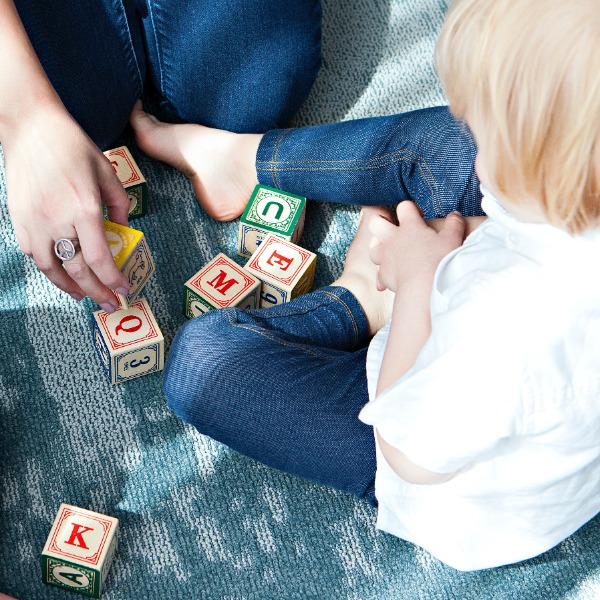
Have an escape plan
Ask the adults who hired you about their household's fire escape plan. Review the plan and ask for clarification if needed.
Family Fire Escape Plan |
| Each minute, a fire can double in size. That is why having a home fire escape plan is one of the most important things you can do for your family. Creating a Family Fire Escape PlanDraw a map of your home with all members of your household. Be sure to include every level and room as well as stairways and hallways. Practice your plan twice a year, once at night and once during the day using different ways out. Your home escape plan should Include: Two ways out of every room
A meeting place outside the home
Develop a fire escape plan today using this Family Fire Escape Plan guide. Escape planning if you live in an apartmentDraw a map of your apartment with all members of your household. Be sure to include every level and room as well as stairways and hallways. Practice your plan twice a year, once at night and once during the day using different ways out. Your home escape plan should Include:
A meeting place outside you apartment
If the apartment is in an apartment building
|
Stay with the kids
Supervise the children when they are awake and check on them often when they are in bed. Once they are asleep, stay close enough to hear them if they wake up. If there is a fire, you will know where they are and it will be easier to help them escape.
Basic precautions
-
Do not smoke.
-
Keep matches and lighters away in a place where children cannot reach them.
-
Keep any space heaters at least three feet away from anything that can burn. Keep the children away from any heating source.
-
If you can cook, always get permission first. Declare a "kid free zone" three feet around the stove or microwave. Turn pot handles in toward the centre of the stove so children cannot grab them. Never leave the room when you are cooking. Keep toys, clothing, paper and other clutter off the stove.
-
Follow all instructions for cooking and never leave anything unattended. Review cooking/kitchen fire safety information frequently.
If there is a fire
-
If there is a fire, stay calm. Your first job is to get everyone outside
-
Once you are outside, stay outside by the designated meeting area (e.g., the tree by the front yard). Do not go back for anything.
-
Call 9-1-1. Use a neighbour's phone or call from a cell phone if you have one
-
Give the fire department the exact address of the fire and stay on the phone until they tell you it is okay to hang up.
-
Call the adults who hired you
For more information about fire safety, refer to Canada Safety Council.
Resources |
| Canadian Red Cross babysitting courses Participants learn how to provide care to younger children in a variety of age groups, and how to prevent and respond to emergencies. For ages 11 and up. SOS4Kids - Red Cross Babysitting course Provides the Red Cross Babysitting program where participants learn how to provide care to younger children in a variety of age groups, and how to prevent and respond to emergencies. For ages 11 and up St. John Ambulance - Babysitting course This course is designed for ages 11-14 and teaches new babysitters the skills necessary to care for infants, toddlers and pre-schoolers. It emphasizes safety, dealing with emergencies and first aid basics. |

Barbeque Safety
Grilling is a popular way to enjoy the nice summer weather, but grill fires can start easily and spread quickly when the gas or charcoal grill is placed too close to any fire hazards. Learn how you can help keep your home and family safe by following our grill safety tips.
Did you know?
-
July is the peak month for grill fires followed by May, June and August
-
Nearly half of all injuries involving grills are from thermal burns
Ways to prevent grill fires and injuries:
-
Keep it clean. Remove greasy buildup on and below the grill surface
-
Check all propane tanks and gas lines for leaks and damage
-
Place your barbecue away from your home, deck railings and under eaves
-
Make sure the grill lid is open before lighting
-
Never leave a lit grill unattended
-
Use long-handled grilling utensils and heat-resistant oven mitts to prevent burns
-
Keep a garden hose nearby and ready for use in the event of a fire
Barbecuing on Balconies
If you live in an apartment or condo building, check your lease agreements or condominium rules to find out if barbeques of any kind are allowed on your balcony.
Ask your superintendent or property manager if you do not have a copy of the rules and regulations specific to your building.
In most cases, balconies are not designed for the use of barbeques as they are not large enough to provide enough clearance from combustible materials (things that can burn).
Smoke from barbeques can drift into nearby apartment units causing concerns for other residents. Smoke may also enter through windows, doors or air intakes and cause false smoke alarms and fire alarms.
Please be considerate of fellow residents and do your part to prevent a false alarm caused by smoke or a fire caused by a barbeque.
If barbecues are permitted in your building, there are still some regulations you need to be aware of:
-
The balcony must be open (no closures or walls have been erected).
-
Cylinders must be transported in a service elevator. When there are no service elevators, the person must use the passenger elevator alone to transport the cylinder.
-
Cylinders must be kept outdoors.
-
The barbecue must be clear of all combustible materials.
-
The cylinder relief valve must be at least one metre horizontally from any building opening below it, and three metres from a building air intake.
Ontario Fire Code Considerations
The Ontario Fire Code does not specifically prohibit the use of barbeques on balconies. However, in the event of fire damage resulting from a barbecue, the owner or resident may face some liability for resulting damage.
Please be advised that the Halton Hills Fire Department does not give approval for balcony barbecuing due to the following concerns:
-
Potential for leakage of propane gas and extensive fire spread from any leakage
-
Lack of proper electrical receptacles on balconies and the need to use temporary solutions such as extension cords, which cause associated hazards
-
Potential for the spread of hot embers from charcoal barbeques with wind conditions
-
Difficulty for firefighters to access balconies to extinguish the fire and the ability for fire to rapidly spread in to the building through glass windows and doors
Resources |
Barn Fire Prevention
If you are a horse owner, a barn fire may be one of your biggest nightmares. You could lose thousands of dollars worth of supplies, feed and equipment and in the worst case scenario, your horses. Most fires are preventable and are often the result of carelessness or simply a lack of knowledge.
Barns and other farm buildings are specifically exempt from Ontario Fire Code regulations. However, if you would like some suggested fire safety tips or have a fire prevention question or concern related to a farm, barn or rural properties, contact Captain Mark Burger at (905) 877-2600 ex 2115 or by email.
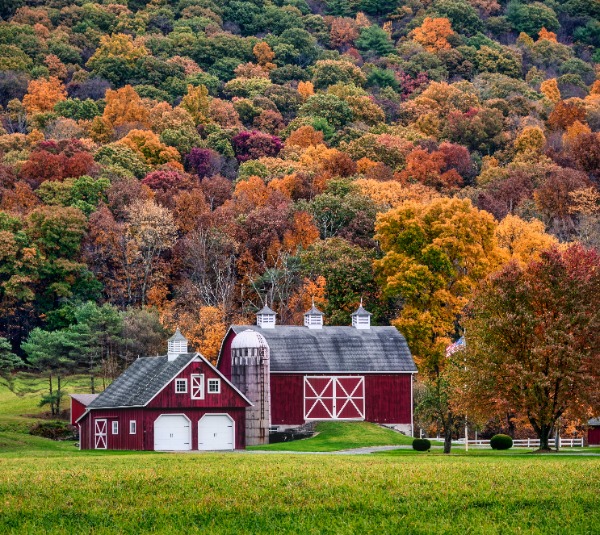
Enhance fire safety in your barn:
-
Have working, accessible fire extinguishers
-
Clearly post the address at each exit and ensure all exits are clear of obstructions
-
Although not required, consider some form of fire detection system (smoke alarms) to provide early warning of fire
-
Where municipal water supply exists, consider installing a sprinkler system
-
Ensure the electrical and heating system is updated
-
Install lightning rods
-
Clean cobwebs, loose hay and dust regularly
-
Enforce a no smoking rule in or around the barn
Resources |
|

Candles
While candles may look pleasant and harmless, they can be dangerous with open flames reaching more than 1,400 degrees Celsius.
Before you purchase candles for your home or as a gift for a loved one, here are a few things to keep in mind.
Candle fires are a leading cause of home fires and happen most often during the holiday season and typically inside the bedroom.
Common causes of candle fires:
-
Leaving candles unattended
-
Falling asleep while a candle is lit
-
Placing candles too close to things that can easily burn
-
Candles knocked over by children, pets or sudden drafts
-
Misusing candles (one of the main causes of home fires, especially during the winter and Christmas holidays)
A safer alternative to live-flame candles
There are now battery operated flameless candles available at most retail stores. These safer alternatives use small L.E.D. (luminated electric diode) bulbs that do not generate any heat and flicker to provide a realistic flame effect. These flameless candles are also extremely efficient and last a long time on battery power.
Guidelines for candle use
-
Blow out before you go out! Do not leave candles unattended.
-
Use sturdy candleholders that will not tip over and are made from non-flammable materials.
-
Keep wax in the candleholder. Wax can act as a wick and carry a flame to a combustible item.
-
Candleholders should be placed on a sturdy, uncluttered surface. Keep them away from children and the edge of a surface.
-
Keep hair and loose clothing away from a burning candle.
-
Keep candlewicks trimmed. Keep wicks one-quarter inch from the top of the candle.
-
Put out candles when they are burnt down to about two inches of their holder or any decorative material. Do not use this candle again.
-
Put out candles carefully. Never leave the room until the wick(s) have stopped glowing. Never leave a burning candle unattended.
-
Do not use candles in bedrooms or sleeping areas.
-
Keep candles at least one foot from anything that can burn including bedding, curtains, blinds, wallpaper, upholstered furniture, clothing, newspapers, etc.
Candle safety during power outages
Avoid using candles as emergency lighting. Always keep flashlights and/or battery-powered lamps and a stock of fresh batteries in a designated area.
Resources |
Carbon Monoxide
Carbon Monoxide (CO) is a poisonous gas that you cannot hear, see, smell or taste. It is known as the "silent killer". CO is the No. 1 cause of accidental poisoning deaths in North America.
CO alarms must be installed outside each sleeping area in all homes and residential buildings with fuel-burning appliances, heating systems, fireplaces or attached garages.
CO is produced by the incomplete burning of fuels like natural gas, propane, heating oil, kerosene, coal, charcoal or wood due to inadequate air. In enclosed spaces like your home, cottage or vehicle, even a small amount of CO is dangerous and can be life threatening.
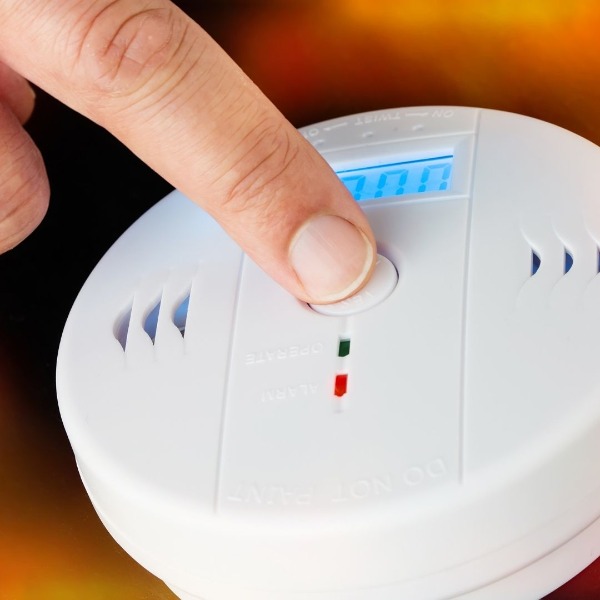
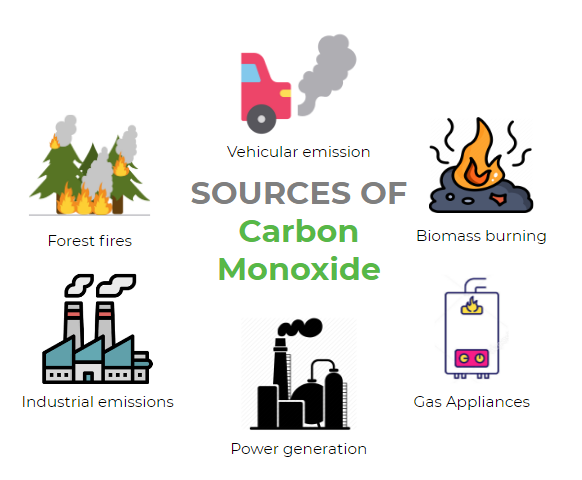
Where should a CO alarm be located in detached homes and townhomes?
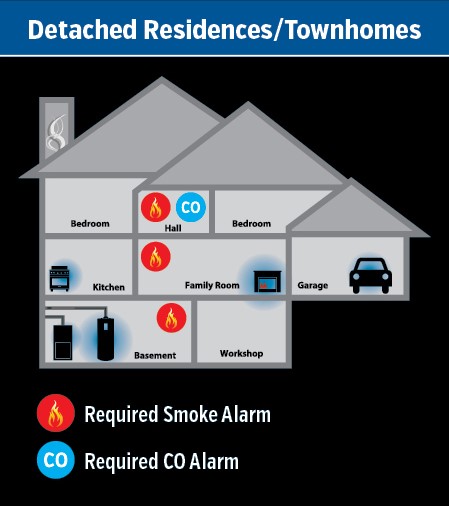
Where should a CO alarm be located in apartments and condominiums?
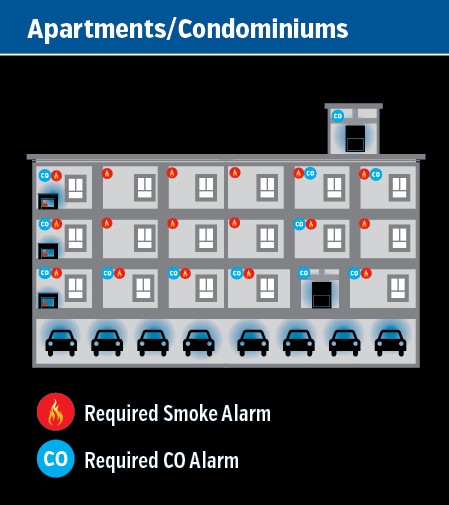
It's the Law |
| CO alarms must be installed outside each sleeping area in all homes and residential buildings with fuel-burning appliances, heating systems, fireplaces or attached garages. This Ontario law was finalized in October 2014 and after a phase-in period; it became enforceable on April 15, 2015. Failure to comply could result in a ticket of $360 or prosecution. |
CO Alarms in Apartment Buildings |
| In all multi-unit residential buildings with attached garages or service rooms, CO alarms are required near each sleeping area in each unit with a common wall, floor or ceiling with the garage or service room. The owner, landlord or property manager must install and maintain properly working CO alarms in your building. |
CO Safety Checklist |
|
Home Safe Home Program |
| Seniors living alone and persons with disabilities or limited mobility that need help maintaining home smoke and CO alarms may request a Home Safe Home visit. The visit includes a home safety inspection designed to identify and rectify fire hazards, assistance with changing batteries in smoke/CO alarms and the replacing of smoke/CO alarms if required. For more information and to find out if you qualify, please call Captain Mark Burger at (905) 877-6001 ex 2115 or by email. |
When your CO alarm sounds |
|

Cooking Fire Safety
Unattended cooking is by far the leading cause of residential structure fires. More fires begin in the kitchen than any other room in the home in Ontario. In fact, residential cooking is one of the leading causes of fire-related deaths. The majority of kitchen fires begin with cooking equipment.
Be fire-safe in the kitchen with these tips
-
Never leave a pot unattended on the stove.
-
Use a timer when baking.
-
Keep clutter away from elements and heating surfaces.
-
Remove all items from the stovetop when you're done cooking.
-
Use a heat-resistant surface to cool down cookware.
-
Keep young children and pets away from stovetops.
-
Never try to move a burning pot. Put a lid on it and turn off heat.
-
Have a fire extinguisher in an accessible place and know how to use it.
-
Understand the dangers of unattended cooking.
Keep your kitchen neat and clean
-
Keep pot holders, food packaging, cookbooks and other combustibles off your stovetop.
-
Wipe up spills and clean your oven. Built up grease can catch fire and spread quickly.
-
Turn pot handles in so you do not accidentally bump into them and hurt yourself or start a fire.
What do I do if I have a kitchen fire? |
Stovetop Fires
Oven/microwave fires
|
Electrical Safety
Electricity makes our lives easier, however we need to be cautious and keep safety in mind when using anything that requires it.
To reduce your risk, the National Fire Prevention Association recommends that you have all electrical work done by a qualified electrician, including electrical inspections, when buying or remodeling a home.
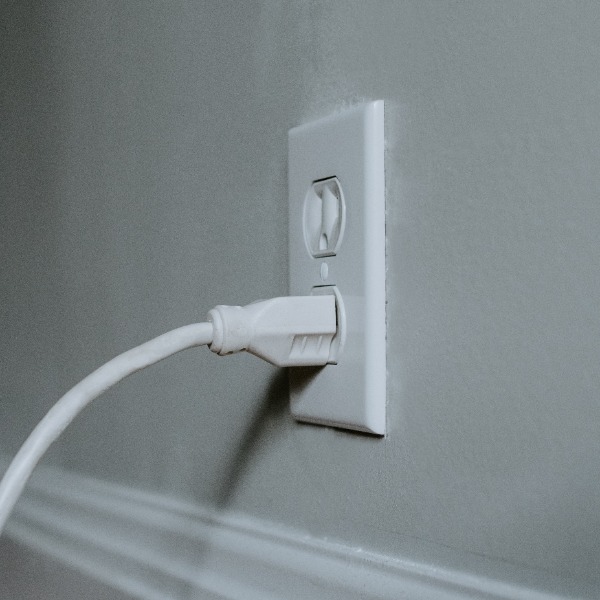
Electrical Appliances Safety
-
Avoid the risk - Use only one heating appliance in the same outlet at a time. Overloading an electrical outlet is a common fire hazard.
-
Do not use an appliance that has a cracked or frayed electrical cord.
-
If you notice that an electrical cord or appliance feels too hot, smokes or gives off a burning odour, unplug it immediately. Do not use this appliance again until it is repaired or replaced.
Electrical safety and water damage
The fire department responds to a wide variety of emergencies involving flooding. Sudden floods create electrical concerns because electrical service is still active in the building or your home and may be impacted by the water.
Water and electricity do not mix and can result in serious injury or death.
Here are some electrical safety tips to follow in the event of a flood:
-
If you are expecting flooding, turn off the main electrical service switch but only if it is safe to do so.
-
If you have time, move as many electrical appliances and equipment to floors or levels above the basement or level where you think it may flood.
-
Stay clear of power lines or electrical equipment that is under water and may still have a current or electrical charge.
-
Do not re-energize any electrical service or equipment that has been submerged or exposed to water until it has been checked by a licensed electrical contractor.
Resources |
|

Family Fire Escape Plan
Did you know that 7 out of 10 fires in Canada occur at home? Protect your family and home from fire with smoke alarms and by planning your escape.
Each minute, a fire can double in size. When a fire occurs, there is no time to waste. That is why having a home fire escape plan is one of the most important things you can do for your family.
Creating a Family Fire Escape Plan
Draw a map of your home with all members of your household. Be sure to include every level and room as well as stairways and hallways. Practice your plan twice a year, once at night and once during the day using different ways out. Your home escape plan should Include:
Two ways out of every room
-
Your primary way out should be using your front door and your secondary way out could be through a second door or a window. Make sure windows can be opened easily.
-
Not all rooms have two exits. In this case, make sure that everyone knows how to exit a room safely.
-
If you come across smoke on your way to your primary way out, use your secondary way out.
-
If you must escape through smoke, get low and go beneath the smoke.
A meeting place outside the home
-
Make sure all family members know where to meet outside the home and mark it on the floor plan.
-
A good meeting place would be a front yard tree, telephone pole or a neighbour's home.
-
Once you get outside, stay outside. Never go back inside a burning building.
-
Call 9-1-1.
Develop a fire escape plan today using this Family Fire Escape Plan guide.
Escape planning if you live in an apartment
Draw a map of your apartment with all members of your household. Be sure to include every level and room as well as stairways and hallways. Practice your plan twice a year, once at night and once during the day using different ways out. Your home escape plan should Include:
Two ways out of every room
-
Your primary way out should be using your front door and your secondary way out could be through a second door or a window. Make sure windows can be opened easily.
-
Not all rooms have two exits. In this case, make sure that everyone knows how to exit a room safely.
-
If you come across smoke on your way to your primary way out, use your secondary way out.
-
If you must escape through smoke, get low and go beneath the smoke.
If the apartment is in an apartment building
-
Review the buildings Fire Safety Plan. A copy should be available on every floor of your building and from your buildings management. This plan will include the locations of stairwells, exits, fire extinguishers and pull stations.
-
Know what to do once you have escaped from the apartment.
Fire and Life Safety for People with a Disability
If you have a disability, whether permanent or temporary, it’s important to think about how you may need to respond during a fire or life safety emergency.
Talk with members of your family, neighbours or building superintendent and create an emergency plan that reflects your individual needs and abilities.

Smoke and carbon monoxide alarms
-
People who are deaf or hard-of-hearing may not be able to rely on the sound of a regular smoke alarm to warn them of a fire.
-
There are specialty alarm devices such as alarms with strobe (flashing) lights and bed shakers that can suit your individual needs and keep you safe at home.
-
Smoke alarms with non-replaceable (long-life) batteries are designed to remain effective for up to 10 years. They can be helpful for people who have difficulty changing batteries.
-
It is important to know that your smoke alarm will work in the event of a fire emergency. Test smoke alarms monthly. Some smoke alarms are equipped with large, easy to push test buttons. Some alarms can be tested using a broomstick.
Home Safe Home Smoke & Co Alarm Program:
Our priority to keep you safe at home, which is why we developed the Home Safe Home Program. This program is designed to support Halton Hills homeowners over the age of 65 or residents with a disability that prevents them from maintaining their home's smoke and carbon monoxide alarms. This program is for people with no support network or agencies available to assist. A Home Safe Home visit includes a home safety inspection designed to identify and rectify fire hazards, assistance with changing batteries in smoke/CO alarms and the replacing of smoke/CO alarms if required.
To request your Home Safe Home visit contact Captain Mark Burger at (905) 877-6001 ex 2115 or by email.
Escape planning
Have a personal escape plan that is customized to meet your needs. Talk about it with everyone at home.
Be sure that the escape plan includes roles for everyone in the household.
If you or someone you live with cannot escape alone, designate a member of the household to assist (have a back-up plan in case the designated helper is away at the time of the emergency).
Conduct regular fire drills to determine if everyone is able to hear and respond to smoke alarms. If someone requires additional warning or uses any special assistance or devices, identify these as part of your plan.
Keep in mind, fire and life safety is everyone’s responsibility. When it comes to understanding your needs, you're the expert. Be sure to communicate any special assistance you might require to caregivers, firefighters or other first responders at the time you make your plan.
Make escape easy. Consider locating your bedroom on the ground floor near an exit, making escape easier. Make sure that smoke alarms are on every level of your home and outside of sleeping areas and carbon monoxide alarms are installed near any sleeping area. Have a phone or telecommunications device installed where you sleep and post-emergency telephone numbers in a central location and in your wallet.
Resources |

Fire Extinguishers
Portable fire extinguishers can be the first thing used to contain or put out a small fire until the fire department arrives. Fire extinguishers are not designed for use on large or spreading fires.
Know when to go
Fire extinguishers are one element of a fire response plan. The most important element is getting out to safety.
Before you fight any fire, be sure that:
-
You know how to use the fire extinguisher.
-
Everyone else has left the building and someone is calling 9-1-1.
-
The fire is small, confined and not spreading.
-
You have a clear escape route.
-
You have the right type of extinguisher for the type of fire that is burning.
Choosing an extinguisher |
| Extinguishers are labelled with standard symbols or letters for the classes of fire they can put out. Check and match these symbols to the contents in the room before buying and installing an extinguisher. All extinguishers must:
No fire extinguisher can be used safely and effectively for every type of fire. Some contain chemicals that will not work in certain situations and can even cause harm if not used correctly. |
Common types of extinguishers |
Dry Chemical ExtinguisherThere are two types of fire extinguishers that use a dry chemical:
Carbon Dioxide Extinguisher
Water Extinguisher
For more information about different classes of fire, visit the National Fire Protection Association's website. |
How to use an extinguisher |
To use an extinguisher, remember the acronym PASS:
Always read the instructions that come with the fire extinguisher and become familiar with its parts and use before a fire breaks out. |
Note: The Halton Hills Fire Department does not sell fire extinguishers. A list of reputable companies can be found online or in your local phone book. Local hardware retailers sell fire extinguishers.
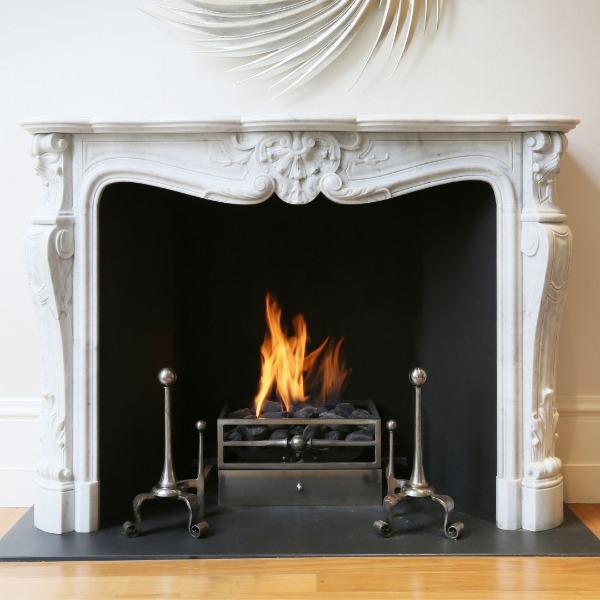
Safety tips for using fireplaces and wood stoves:
-
Any wood burning appliance or device should be thoroughly inspected and cleaned at least once a year by a Wood Energy Technology Transfer (W.E.T.T.) certified technician, even if it is only used a couple of times a year. Appliances used often may need to be inspected more frequently.
-
Do not use appliances that have not been used in a long time until a complete inspection has been done by a W.E.T.T. certified technician. All parts should be inspected including the inside and outside of the chimney and firebox. Age, weather and animals can cause serious damage.
-
If you are thinking about installing a new wood-burning appliance, make sure you get a building permit and have the work inspected before you use it.
-
Only burn quality, seasoned firewood. Never burn garbage or papers in the appliance.
-
Keep combustible material away from the appliance while it is in use.

Tips for the safe use of space heaters
-
Keep at least one metre away from combustible materials such as paper, bedding, furniture and curtains.
-
Never plug an electric space heater into an extension cord.
-
Do not over fuse the electric panel if the fuses continue to blow. Reduce the number of electrical appliances on that circuit. Most household circuits are designed for fifteen amps and some heaters require as much as twelve to fourteen amps to operate.
-
Use CSA or ULC approved products.
-
Never use a space heater with a damaged electrical cord.
-
When using a fuel fired space heater such as kerosene, provide sufficient fresh air and ventilation.
-
Never re-fuel the space heater indoors.
-
Turn off and unplug space heaters when leaving the room or home.
-
Turn off and unplug space heaters before going to bed.
-
Choose space heaters with an auto shutoff if tipped over.
Resources |
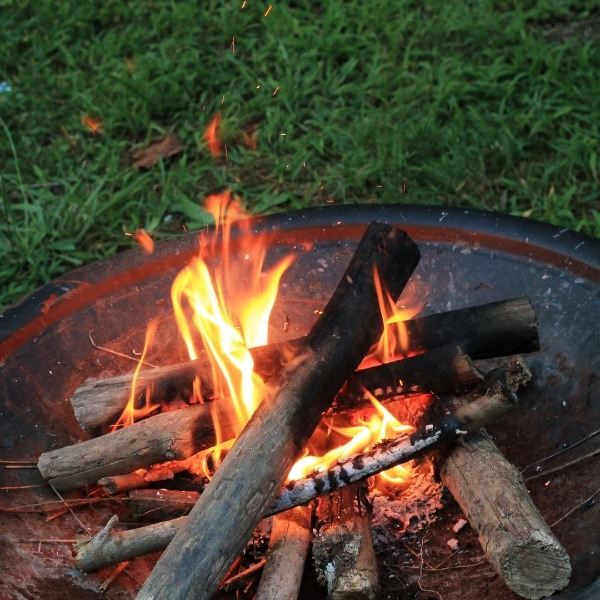
Details about open air burning with a permit |
||||||||
When applying for a new burn permit (an expired permit older than 12 months from the current date is considered a new permit and not a renewal), please include two pictures. One picture taken from the back fence facing the back of the home and one picture taken from the back of the home towards the fence. Both pictures MUST include what you are using for containment (i.e. chimnea/burn barrel/stone surround). The picture should also your method of extinguishment (e.g. garden hose) and that it will safely reach the burn area. When submitting your pictures, be mindful that adequate clearance from combustibles and structures must be clearly visible. |
||||||||
Application Information |
||||||||
| To obtain a permit the applicant must complete an application and forward the appropriate fee to: Halton Hills Fire Department, 14007 10 Sideroad, Georgetown, ON, L7G 4S5. Payment can be made by cash, cheque, visa or debit card. Upon receipt of the completed application and appropriate funds received the Fire Department will then conduct a site inspection (if required). The inspector will issue you a permit upon a successful site inspection and agreement to follow the conditions of the permit (listed below). There will be no refunds for a failed inspection but there will be no fee associated for any re-inspection required. Inspections for renewals of farm or recreational/residential permits are not required. Upon receipt of the completed application and appropriate funds, an approved permit will be issued. Applications can be obtained at either the Acton or Georgetown fire stations or online. Further information can be obtained by calling the Fire Department.
|
||||||||
Conditions for a Burn Permit |
||||||||
| Ontario Fire Code Sentence 2.4.4.4(1) states “Open air burning shall not take place unless (a) it has been approved, or (b) the open-air burning consists of a small, confined fire that is (i) used to cook food on a grill, barbecue or spit, (ii) commensurate with the type and quantity of food being cooked, and (iii) supervised at all times." InterpretationA ‘small, confined fire' used to cook food is defined as a fire reasonably proportioned to the food being cooked. Cooking of food other than on a grill/BBQ or spit requires an open air burn permit. The fire must be contained in a fire pit or enclosure that is constructed of a non-combustible material such as stones, cement or metal. The enclosure shall be designed to limit the size of the fire to the surface area of a household barbecue. The fire must be extinguished immediately after the food has been cooked. Permit to conduct open air burning general requirements
NOTE: leaves and other compostable yard waste may not be burned in the urban areas or where yard waste pick-up is available.
Recreational and residential specific requirements
Municipal addressThe municipal address of the property must be clearly posted at the burn site. In rural areas and at construction sites where no municipal address is assigned to the site, the Notice provided by the Halton Hills Fire Department shall be posted at the entrance to the site. |
||||||||
Penalties |
||||||||
| Any violation of the conditions of the Permit to Conduct Open Air Burning, in the opinion of the Fire Department, will result in any or all of the following action(s) being taken.
Subsection 28(3)(b) of the Fire Protection and Prevention Act 1997 states: “An individual convicted of an offence is liable to, in the case of an offence for contravention of the fire code, a fine of not more than $50,000 or to imprisonment for a term of not more than one year, or to both.” Subsection 28(4) of the Fire Protection and Prevention Act 1997 states: “A corporation is convicted of an offence is liable to a fine of not more than $100,000.” Subsection 28(5) of the Fire Protection and Prevention Act 1997 states: “A director or officer of a corporation who knows that the corporation is violating or has violated a provision of the fire code is guilty of an offence and on conviction is liable to a fine of not more than $50,000 or to imprisonment for a term of not more than one year, or both.” Cost RecoveryIn the event the Halton Hills Fire Department responds to extinguish Open Air Burning being conducted without a Permit, or in violation of the conditions of the Permit, the full costs of extinguishment, including labour costs and equipment costs, as determined by the Chief Fire Official may be charged to the property owner and/or Permit Holder. |
||||||||
Frequently Asked Questions |
||||||||
|

Smoke Alarms
The largest percentage of fire deaths in the home occurs at night while people are sleeping. Working smoke alarms provide early warning and time to escape.
Smoke alarms expire after 10 years
Smoke alarms expire after 10 years. Regardless of the power source (hardwired or battery), after 10 years the sensing technology inside the alarm may no longer be reliable in sensing smoke or fire. That's why smoke alarms must be replaced every 10 years.
Not sure of the age of your alarms? Check the expiry date sticker usually found on the side of the alarm or the date of manufacture listed on the backside of the alarm.
It's the Law
Every home must have working smoke alarms on every level and outside all sleeping areas.
Buying the Right Alarm
There are several types of smoke alarms with different features. Alarms can be electrically connected, battery powered or a combination of both. Many alarms have a pause or hush feature, which can be used to temporarily silence nuisance alarms.
Where to Install Smoke Alarms
Install smoke alarms on the ceiling because smoke rises. If that's not an option, place high on the wall in accordance with the manufacturer's instructions. Avoid placing close to bathrooms, heating appliances or close to windows and ceiling fans. For added protection, install additional alarms inside the bedrooms.
Smoke Alarm Safety Checklist
-
Test smoke alarms monthly
-
Change the batteries at least once a year
-
Gently vacuum annually with soft brush
-
Replace smoke alarms when they exceed the manufacturer's recommended lifecycle, which is generally 10 years. However, replace alarms sooner if they are damaged, painted or malfunctioning.
Safety is Everyone's Responsibility:
Homeowners:
As a homeowner, it is your responsibility to install and maintain smoke alarms on every level of your home and outside sleeping areas.
Landlords:
As a landlord, it is your responsibility to ensure your rental properties comply with this law.
Tenants/Renters:
If you are a tenant of a rental property and do not have the required number of smoke alarms, contact your landlord immediately. It is against the law for tenants to remove the batteries or tamper with the smoke alarms in any way.
Alarms for the Hearing Impaired
Smoke alarms that employ high decibel alarms and strobe lights are available for the deaf or hard-of-hearing. Visit the Canadian Hearing Service's website for information.
Halton Hills Fire Department's Home Safe Home Program
Seniors living alone and persons with disabilities or limited mobility that need help maintaining home smoke and CO alarms may request a Home Safe Home visit. The visit includes a home safety inspection designed to identify and rectify fire hazards, assistance with changing batteries in smoke/CO alarms and the replacing of smoke/CO alarms if required.
This is a free and voluntary assistance program offered by the fire department to eligible residents. Participating homeowners are solely responsible for ensuring their homes are compliant with Ontario laws.
Note: Hardwired alarm units must be installed and/or serviced by a licensed technician/electrician.
For program information and eligibility criteria, please call Captain Mark Burger at (905) 877-6001 ex 2115 or contact him by email.
Smoke and Carbon Monoxide Alarm Assistance Program
Supporting Our Seniors
If you are an older adult or an individual who is unable to install or test your smoke alarm, we would like to help. The Halton Hills Fire Department Home Safe Home Program might be for you.
For those living in apartment buildings or assisted-living residences where smoke alarms are maintained by building management, we can still answer your questions and provide safety information.
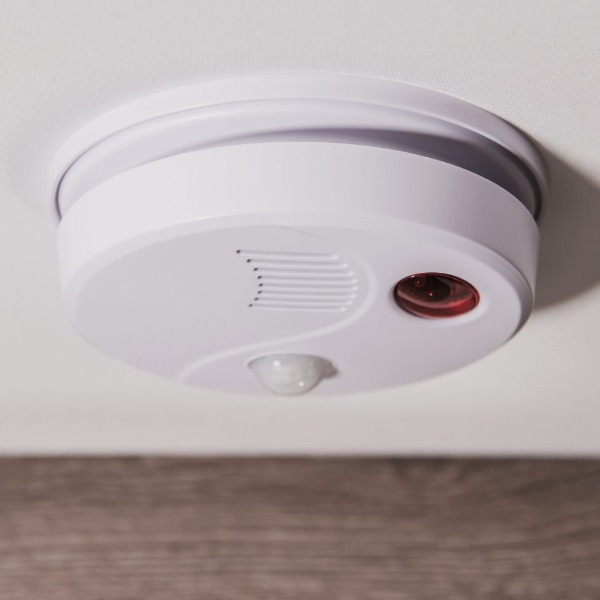
Resources |

Smoking Fire Safety
Aside from the fact that smoking is bad for your health, there are more reasons why smoking can be deadly:
-
Fires started by cigarettes cause one out of every five fire fatalities.
-
Careless smoking is the No. 1 cause of home fire deaths in Canada.
Thinking of quitting? Visit Halton Region's Public Health Thinking of Quitting Smoking webpage.
Prevent smoking-related fires with these safety tips:
-
If you smoke, smoke outside
-
Use deep, wide ashtrays that cannot be knocked over
-
Empty ashes into a metal container - not the garbage can - and put it outside
-
Before you throw out butts and ashes, make sure they are out. Dousing in water or sand is the best way to do that
-
Never flick lit cigarette butts off balconies
-
Do not extinguish cigarettes in plant pots, which may contain a mixture of peat moss, shredded wood and bark that can easily ignite
-
Never smoke in bed.
Did you know?
-
Smoking fires account for 8% of all home fires.
-
One in 10 smoking fires results in an injury or death.
-
One in four home fire fatalities are caused by smoking.
-
65%of smoking fires are caused by improper discarding of smoking materials.
-
The average dollar loss per smoking fire is $37,000
More information for tenants, landlords and owners about the benefits of smoke-free housing can be found on Halton Region's Smoke-free Housing page
Student Safety
Every year, preventable fires affect students. While there are several causes for these fires, (i.e. cigarettes, candles, cooking, space heaters, etc.) you need to be prepared in the event of fire:
- Review the Fire Safety Awareness Campaign Knowfire

10 Tips for a Safe Place to Live
-
Stay in the kitchen when cooking. If a pot catches fire, slide a lid over the pot and turn off the stove.
-
Be careful with candles. Keep them away from anything that can burn and place them in a safe, sturdy holder.
-
Keep an eye on excessive drinkers. Alcohol is a common factor in many fire deaths involving cooking and smoking.
-
Smoke outside and establish rules for smokers.
-
Use electricity wisely. Toasters, coffeemakers and microwaves should be plugged directly into an outlet. Review electrical safety guidelines.
-
Clear the clutter. Keep things that burn away from heat sources like stovetops, space heaters and electronic equipment.
-
Have working smoke alarms, it's the law. Your room or apartment must have working smoke alarms. Test them monthly and notify the landlord immediately if they are not working.
-
Plan an escape. Have an escape plan. Know two ways out of your room or apartment in case of fire.
-
Be equipped: To stay safe, put together a kit that includes a smoke alarm and carbon monoxide alarm, a battery powered lantern or flashlight, a radio, extra batteries and an approved power bar.
-
Learn more. For more information about fire safety in student accommodations, consult Ministry of Community Safety and Correctional Services or Electrical Safety Authority.
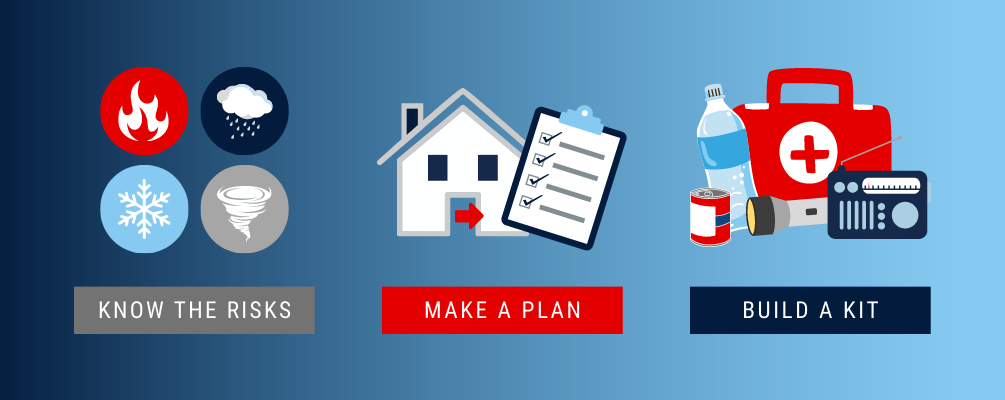
Emergency Preparedness
To learn about emergency preparedness and what steps you can take to keep you and your family safe in an emergency, please visit our Emergency Preparedness page.






